Year 1
The English curriculum is built around the three interrelated strands of language, literature and literacy. Teaching and learning programs should balance and integrate all three strands. Together, the strands focus on developing students' knowledge, understanding and skills in listening, reading, viewing, speaking, writing and creating. Learning in English builds on concepts, skills and processes developed in earlier years, and teachers will revisit and strengthen these as needed.
In Year 1, students communicate with peers, teachers, known adults and students from other classes.
Students engage with a variety of texts for enjoyment. They listen to, read, view and interpret spoken, written and multimodal texts designed to entertain and inform. These encompass traditional oral texts including Aboriginal stories, picture books, various types of stories, rhyming verse, poetry, non-fiction, film, dramatic performances and texts used by students as models for constructing their own texts.
The range of literary texts for Foundation to Year 10 comprises Australian literature, including the oral narrative traditions of Aboriginal and Torres Strait Islander Peoples, as well as the contemporary literature of these two cultural groups, and classic and contemporary world literature, including texts from and about Asia. Literary texts that support and extend Year 1 students as independent readers involve straightforward sequences of events and everyday happenings with recognisably realistic or imaginary characters. Informative texts present a small amount of new content about familiar topics of interest and topics being studied in other areas of the curriculum. These include decodable and predictable texts which present a small range of language features, including simple and compound sentences, some unfamiliar vocabulary, a small number of high-frequency words and words that need to be decoded phonically, as well as illustrations and diagrams that support the printed text.
Students create a variety of imaginative, informative and persuasive texts including recounts, procedures, performances, literary retellings and poetry.
(source: www.australiancurriculum.edu.au)
Achievement Standard
Receptive modes (listening, reading and viewing)
By the end of Year 1, students understand the different purposes of texts. They make connections to personal experience when explaining characters and main events in short texts. They identify that texts serve different purposes and that this affects how they are organised. They describe characters, settings and events in different types of literature.
Students read aloud, with developing fluency. They read short texts with some unfamiliar vocabulary, simple and compound sentences and supportive images. When reading, they use knowledge of the relationship between sounds and letters, high-frequency words, sentence boundary punctuation and directionality to make meaning. They recall key ideas and recognise literal and implied meaning in texts. They listen to others when taking part in conversations, using appropriate language features and interaction skills.
Productive modes (speaking, writing and creating)
Students understand how characters in texts are developed and give reasons for personal preferences. They create texts that show understanding of the connection between writing, speech and images.
They create short texts for a small range of purposes. They interact in pair, group and class discussions, taking turns when responding. They make short presentations on familiar topics. When writing, students provide details about ideas or events, and details about the participants in those events. They accurately spell high-frequency words and words with regular spelling patterns. They use capital letters and full stops and form all upper- and lower-case letters correctly.
(source: www.australiancurriculum.edu.au)
- Plus Plan
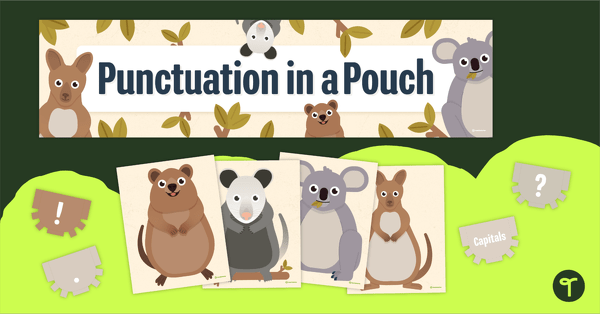
Punctuation in a Pouch
A fun marsupial-themed classroom display to help your students correct sentence punctuation.
- Plus Plan
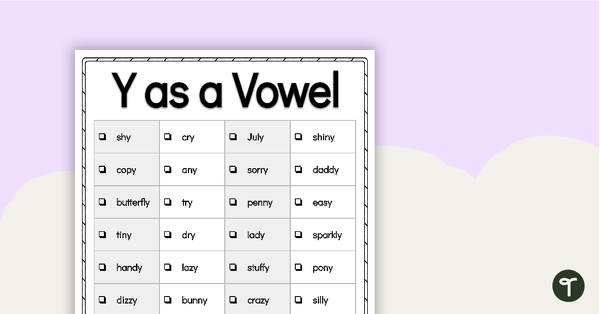
Word Study List - Y as a Vowel
Introduce and explore words containing the letter ‘y’ making a vowel sound with this extensive list of words.
- Plus Plan
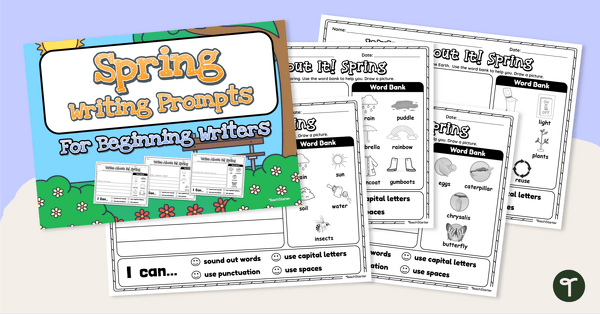
Spring Writing Prompts for Beginning Writers
Use the season of spring to inspire writing in your early years classroom.
- Plus Plan
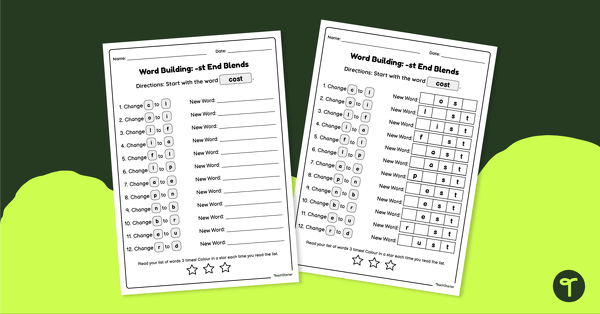
Word Chain Worksheet - End -st Blends
Create word chains by manipulating the individual phonemes in words with this differentiated word-building worksheet.
- Plus Plan

FIND IT! Long and Short Vowels - Task Cards
Practice distinguishing between short vowel sounds and long vowel sounds with this set of 16 task cards.
- Plus Plan
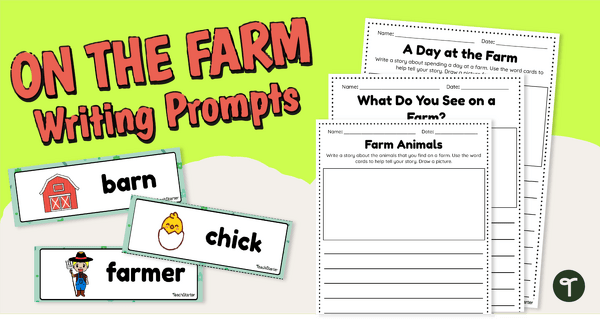
Farm-Themed Flashcards and Writing Prompts
Build vocabulary and writing skills with this ocean-themed writing activity.
- Plus Plan
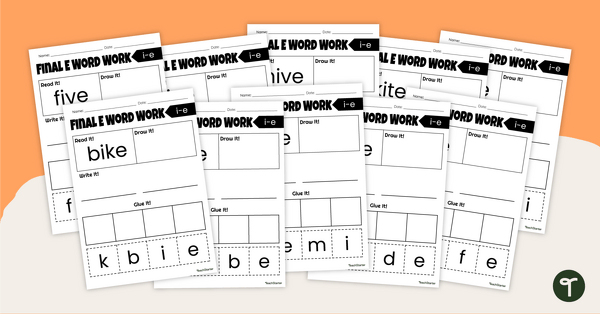
Final 'E' Worksheet Pack (I_E)
Explore words that make the 'long i' sound using the split i_e digraph with this set of 11 worksheets.
- Plus Plan
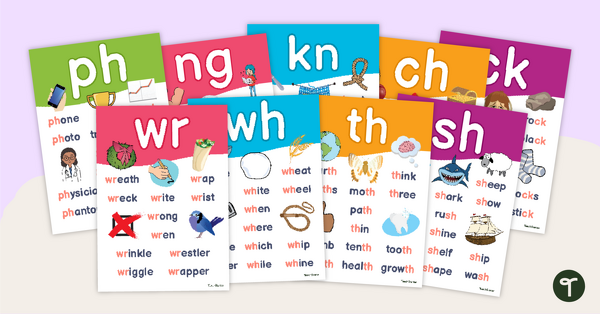
Consonant Digraphs Poster Pack
Expose your students to the most common consonant digraphs with this set of 9 posters.
- Plus Plan
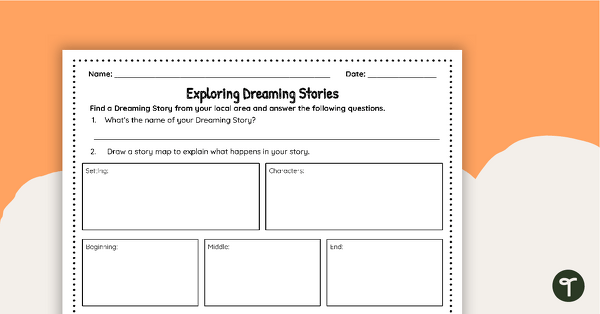
Explore a Dreaming Story – Worksheet
Use this template to explore First Nations’ Dreaming stories and unlock how they connect to Country.
- Plus Plan
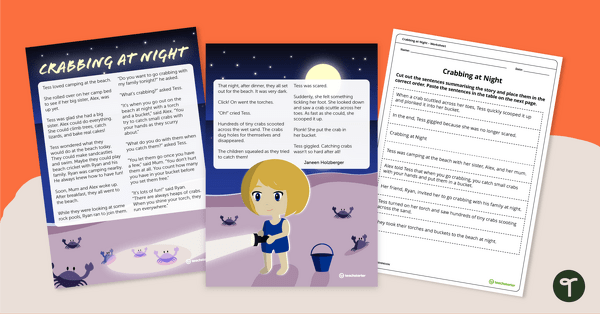
Crabbing at Night - Sequencing Worksheet
Identify the story beginning, series of events and ending with this narrative text sequencing activity.
- Free Plan

Long and Short Vowel Sort
A sorting by long vowel, short vowel printable.
- Plus Plan
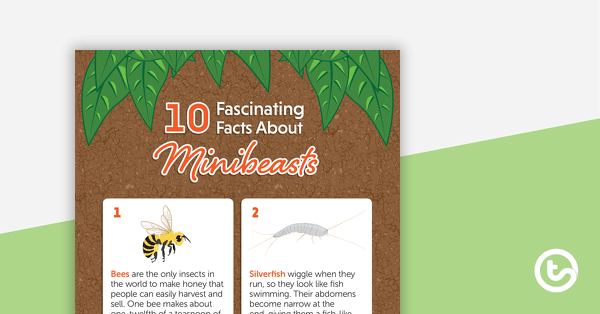
10 Fascinating Facts About Minibeasts – Worksheet
A comprehension worksheet for a fascinating facts article from the Year 2 magazine (Issue 2).
- Plus Plan
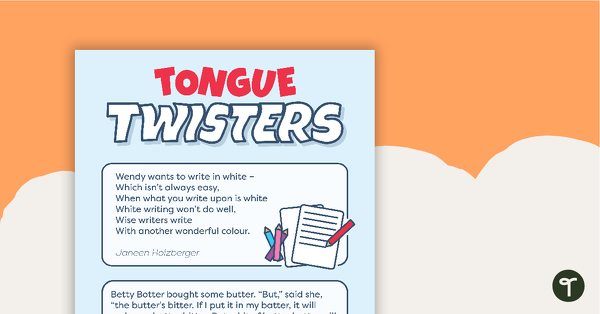
Tongue Twisters – Worksheet
A comprehension worksheet for a magazine article from the Year 1 magazine (Issue 3).
- Plus Plan
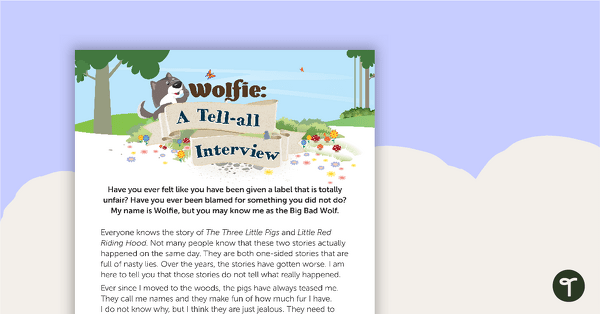
Wolfie: A Tell-all Interview – Worksheet
A comprehension worksheet for a narrative from the Year 2 magazine (Issue 3).
- Plus Plan
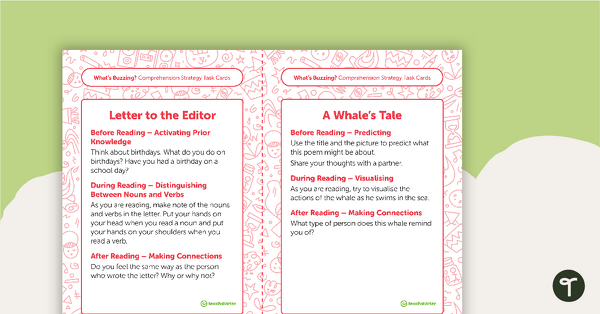
Year 1 Magazine - "What's Buzzing?" (Issue 2) Task Cards
A set of five literacy rotation task cards to be used in conjunction with Issue 2 of Teach Starter’s Year 1 magazine.
- Plus Plan
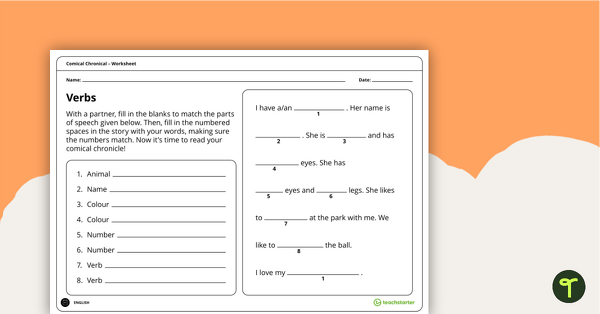
Comical Chronicle Worksheets – Year 1
A set of 10 ad-lib style stories for students to complete.
- Plus Plan
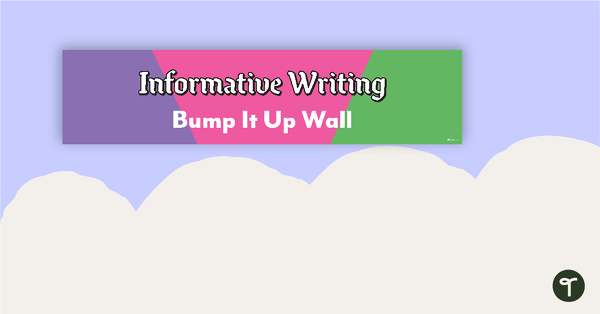
Informative Writing Bump It Up Wall – Year 1
A visual display for your classroom to help students 'bump up' their informative writing.
- Plus Plan
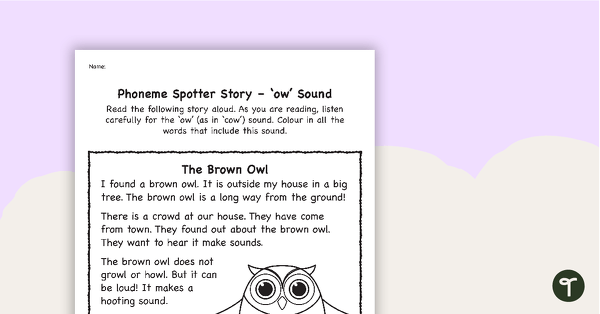
Phoneme Spotter Story – 'ow' Sound
A decodable text featuring various graphemes that make the ‘ow’ sound.
- Plus Plan
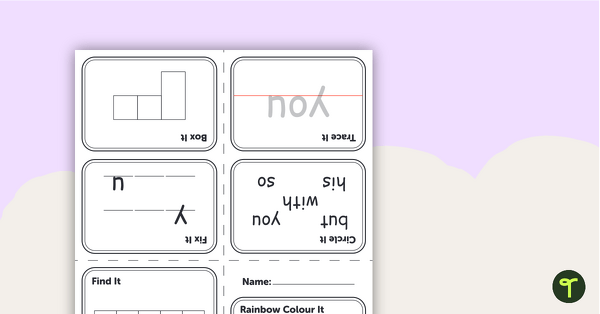
‘You’ Sight Word Little Book
A little book with activities for the word ‘you’.
- Free Plan

Letter to the Editor (More Screen Time) – Worksheet
A comprehension worksheet for a magazine article from the Year 2 magazine (Issue 3).
- Plus Plan
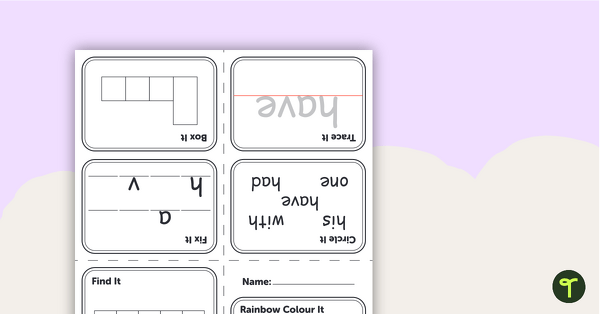
‘Have’ Sight Word Little Book
A little book with activities for the word ‘have’.
- Plus Plan
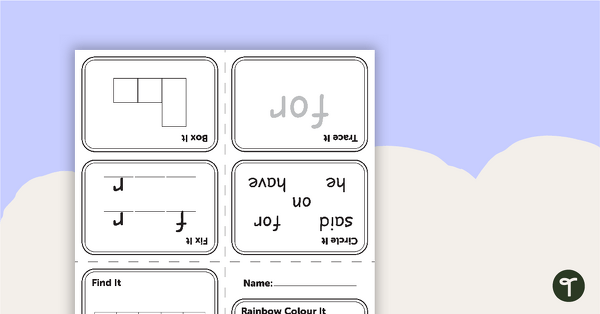
‘For’ Sight Word Little Book
A little book with activities for the word ‘for’.
- Plus Plan
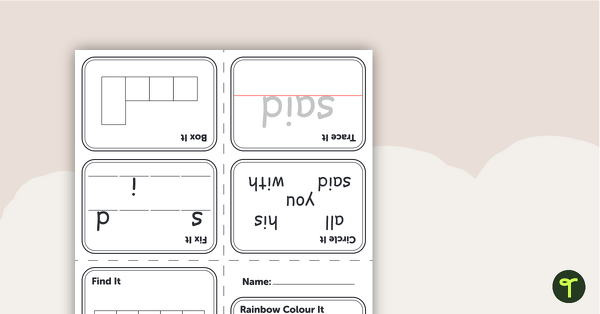
‘Said’ Sight Word Little Book
A little book with activities for the word 'said'.
- Plus Plan
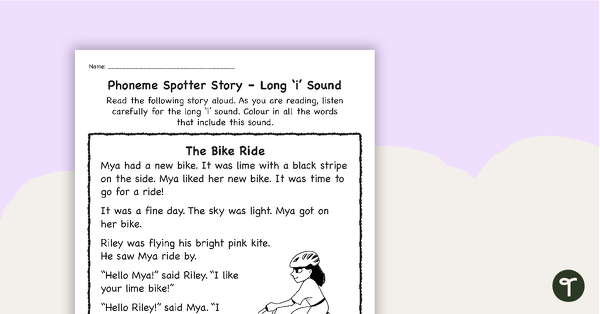
Phoneme Spotter Story – Long 'i' Sound
A decodable text featuring various graphemes that make the long 'i' sound.
- Plus Plan
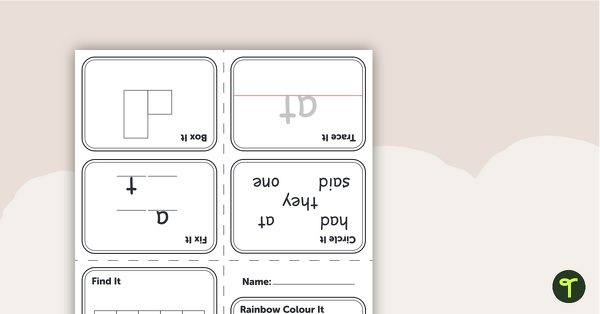
‘At’ Sight Word Little Book
A little book with activities for the word 'at'.
- Plus Plan

‘As’ Sight Word Little Book
A little book with activities for the word 'as'.
- Plus Plan
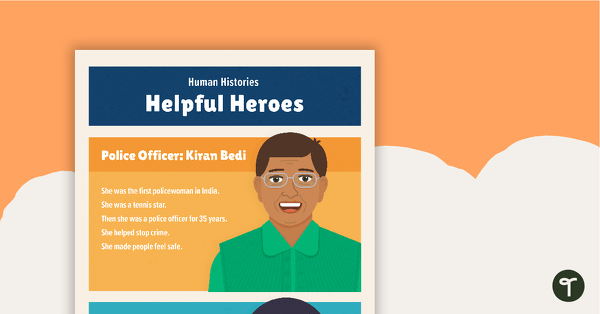
Human Histories: Helpful Heroes – Comprehension Worksheet
A comprehension worksheet for an article about people around the world who have dedicated their lives to helping others.
- Plus Plan
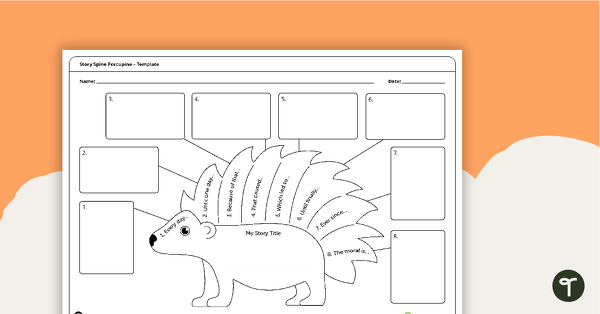
Story Spine Porcupine – Narrative Writing Template
A template designed to help students plan their narrative writing structure.
- Free Plan

What Toy Am I? - Toy Definition Match Up Game
A set of 20 puzzle cards for students to match pictures of toys to their definition.
- Plus Plan
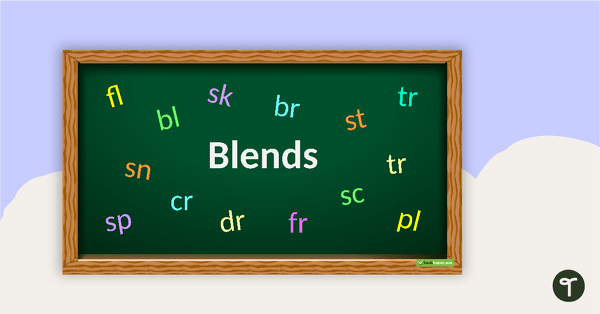
Blends PowerPoint
A 21 slide PowerPoint presentation on different blends.
- Plus Plan
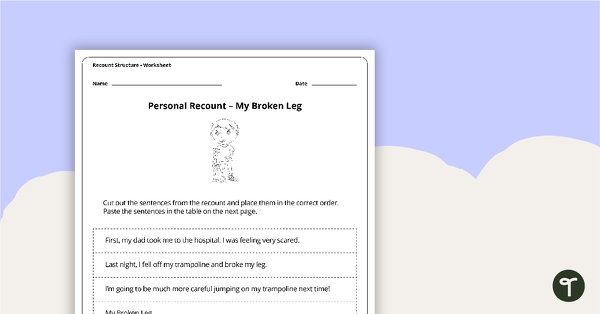
Personal Recount Sequencing Activity - My Broken Leg
A worksheet to use in the classroom when learning the sequence of a personal recount.
- Plus Plan
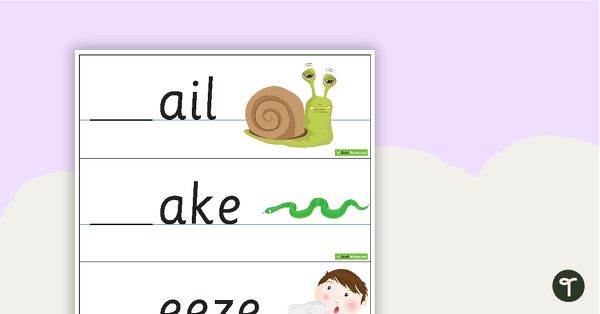
Initial S Blend Cards
A resource to help students identify the S blend at the beginning of a word.